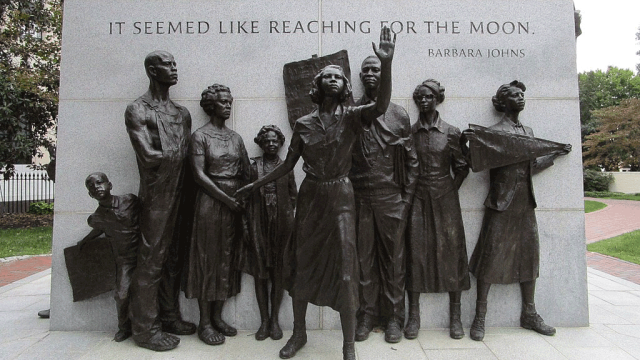Your whole family can benefit from a visit to one of these museums and historic sites that teach about the Black experience in America
Make every month Black History Month by visiting one of these important spots: from museums of African-American history to historic sites that represent important Black people and events in our nation’s history, you can teach your children about Black history and culture while having a memorable family vacation.
Museum of African American History | Boston, MA
Showcasing the life of free Black Massachusetts residents in the 18th and 19th centuries, the Museum of African American History consists of four original African American buildings built before the founding of the United States. Exhibits include documentation on the first slave ship to dock in Boston Harbor before slavery was outlawed in the state, photographs, papers, and other pieces of culture. A school, meeting houses, and home are all part of the museum, which has locations in both Boston and Nantucket.
National Museum of the Tuskegee Airmen | Detroit, MI
The Tuskegee Airmen were dedicated, determined young men who enlisted to become America’s first Black military airmen at a time when there were many people who thought that Black men lacked intelligence, skill, courage and patriotism. Learn about their significant contributions at the National Museum of the Tuskegee Airmen which is now a part of the Charles H. Wright Museum of African American History.
Whitney Plantation | Wallace, LA
A former sugar and indigo plantation, Whitney Plantation is dedicated to telling the story of the enslaved residents alongside that of their owners. Through on-site tours and education from employees, visitors will learn the history of the transatlantic slave trade along with slavery in the area. The Whitney also has rotating exhibits on various subjects related to slavery.
Schomburg Center for Research in Black Culture | Harlem, New York City, NY
Part of the New York City Public Library system, the Schomburg Center for Research in Black Culture is a world-renowned research library preserving African American and African descent cultures. Named for an African-Puerto Rican scholar, the library has some of the rarest artifacts of Black history in the United States, including an original book of poetry written by Phillis Wheatley in the 18th century and works by Malcolm X and Booker T. Washington. It is also the final resting place for famed Harlem Renaissance poet Langston Hughes, whose ashes are interred in the floor of the main entryway. While many items are only accessible by researchers, the building is open to the public, as are two rotating exhibits and the presentations held at the center.
National Center for Civil and Human Rights | Atlanta, GA
Dedicated to telling the stories of civil rights struggles worldwide, the National Center for Civil and Human Rights offers exhibits, educational programs, and memorabilia to explore. Home to the Morehouse College Martin Luther King, Jr. Collection, visitors can view Dr. King's papers and photographs in the Voice to the Voiceless Gallery. At the lunch counter sit-in, experience a simulation of sitting with those who non-violently protested being able to eat anywhere they chose. And in the U.S. civil rights exhibit, read of heroes who put their lives on the line to protest Jim Crow segregation laws.
Juneteenth Historical Marker | Galveston, TX
The next time you visit Galveston Island, be sure to find the historical marker that represents "Juneteenth," June 19th, 1865, the day that enslaved people in Texas discovered they had been freed by President Lincoln over two years prior. It wasn't until Union troops, along with Maj. Gen. Gordon Granger landed on the island and announced that enslaved people were now free that Texas reconstruction began. As early as 1866, formerly enslaved people were celebrating "Emancipation Day" in Galveston, which has continued to grow and is now a worldwide celebration of freedom.
Explore Richmond's Legacy | Richmond, VA
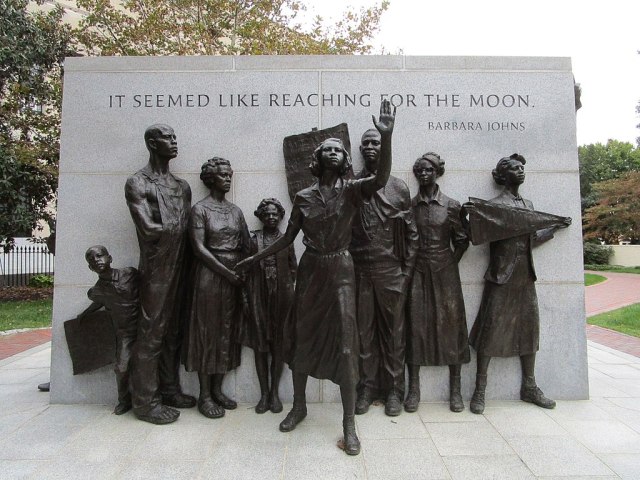
Richmond is steeped in important Black history and here are just a few of the ways you can experience it with your kids.
Visit the home of Maggie Lena Walker, a newspaper editor, bank president, and champion of civil rights for African Americans and women. Join a tour of her home and an exhibit hall, watch a short film about her life and walk in the footsteps of a great activist of the early 20th century. There's also a Maggie L. Walker Memorial Plaza.
The Black History Museum & Cultural Center of Virginia celebrates the rich culture and history of African Americans people in Virginia and has permanent exhibits that explore Jim Crow, Reconstruction, Emancipation, and more.
You can also explore Richmond’s monuments: Virginia Civil Rights Memorial on the Capitol grounds, Slavery Reconciliation Statue, actor and dancer Bill “Bojangles” Robinson monument, and the tennis icon Arthur Ashe monument on Monument Ave. There's also a self-guided Richmond Slave Trail: Walk along and discover seventeen different markers that display the somber truth about slavery in Richmond.
At the Virginia Museum of Fine Arts entrance along historic Arthur Ashe Boulevard, you'll find Rumors of War, a powerful sculpture by Black artist Kehinde Wiley.
Discover even more at visitrichmondva.com
The Legacy Museum | Montgomery, AL
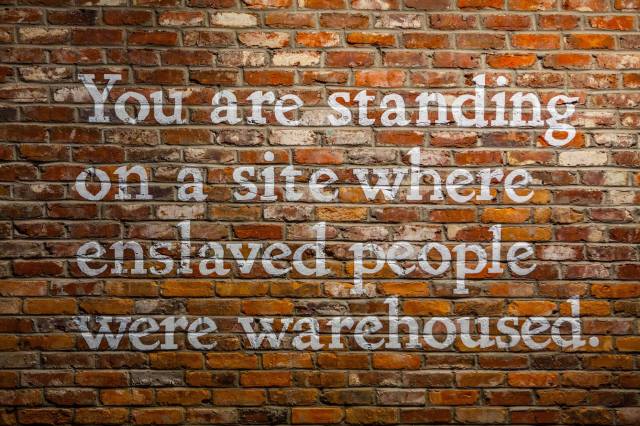
The museum depicts the history of Black people in the United States, beginning with slavery, through Jim Crow laws and segregation, to current issues of mass incarceration. The memorial, a quick walk away, honors 4,000 victims of lynching and racial violence. By filling in the gaps in the history that many Americans learn in school, the content presented may help families initiate discussions related to race and inequality in the United States
The National Underground Railroad Freedom Center | Cincinnati, OH
Located just a short walk from the beautiful Ohio River, this museum's mission is to "reveal stories of freedom's heroes, from the era of the Underground Railroad to contemporary times." From permanent exhibits to new and rotating exhibitions, the museum illuminates the concepts of freedom, what it means to be free, and issues of both historic and modern-day slavery. Read the letters home from a Black soldier in WWII, what the pen of an enslaved person really looked like, and the journey from being enslaved by a family to emancipation, in pictures and letters. You'll find an array of online learning resources including exhibits, lesson plans, and videos.
Learn more at: freedomcenter.org
Civil Rights, Black History & Culture | Jackson, MS
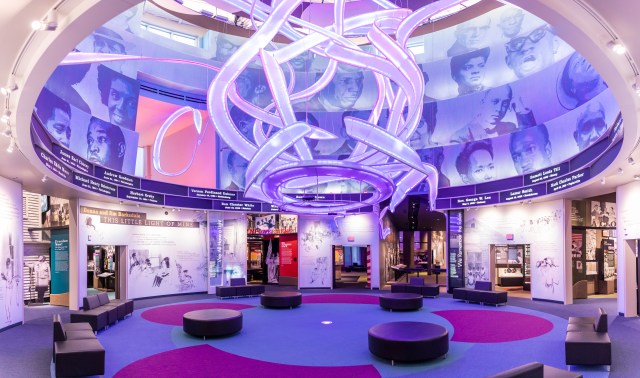
Jackson, Mississippi, is famously known for the renowned Civil Rights Museum, But Jackson is also home to many lesser-known Civil Rights sites you can visit and more than one iconic walking trail, making it a great place to experience Black History any time of the year. You'll find the Mississippi Freedom Trail with ten important sites as well as the Mississippi Blues Trail which highlights the history and significance of the Blues in Jackson.
Additional spots not to miss include the Smith Robertson Museum and Cultural Center, the International Museum of Muslim Cultures, countless historic churches, and, of course, some of the best eateries in all of Mississippi.
Learn more at: visitjackson.com
Arts & Culture | Chattanooga, TN
A visit to Chattanooga, TN is full of opportunities to learn about Black history.
Founded in 1983 as the Chattanooga African American Museum, the Bessie Smith Cultural Center celebrates the African Diaspora and pays tribute to Chattanooga’s African American culture with an emphasis on Bessie Smith, “The Empress of the Blues.”
The Soul of MLK mural project has begun and is beginning work on its third side to help bring revitalization of the MLK District. Across town at the southern entrance of the Walnut Street Pedestrian Bridge, the Ed Johnson Memorial is a permanent public site that strives to promote racial healing and reconciliation by acknowledging the lynching of Ed Johnson, honoring the courageous work of his attorneys, and recognizing the resulting U.S. Supreme Court case that established federal oversight of state-level civil rights issues.
Niagara Falls Underground Railroad Heritage Center | Niagara Falls, NY
Opened in 2018, the Niagara Falls Underground Railroad Heritage Center tells the stories of freedom seekers who risked their lives to escape slavery and oppression by journeying north to Niagara Falls as one of their final stops and border crossing. Captured in various exhibits, this important history is documented and shared with visitors from around the country. Virtual tours are also available for those who aren't able to visit in person.
Walk in Frederick Douglass' Footsteps | Baltimore, MD
Born into slavery in Maryland in 1818, Frederick Augustus Washington Bailey came to Baltimore as a child where he lived as an enslaved person in the Auld family home on Aliceanna St. (known as Happy Alley). It was here that he learned to read; Hugh Auld's wife Sophia taught Frederick the alphabet (in spite of her husband's disapproval). See the Fell's Point shipyards where Douglass worked and the place where he purchased his first-ever book (28 Thames St.). In 1838, disguised as a sailor, he escaped north to freedom on the train; it is thought he passed through Baltimore's President Street Station, (where you can now find a Civil War Museum). Douglass went on to change the course of history by fighting tirelessly for freedom and equality. (Fun fact: When he married, he took the name Douglass after the hero clan in Sir Walter Scott's famous poem, Lady of the Lake.)
Later in life, Douglass returned to Baltimore to build a row of houses for African-American renters. You can visit the Frederick Douglass-Isaac Myers Maritime Park Museum in Fell's Point, on the site of the first African American-owned shipyard in the United States, and see a large sculpture of Douglass at Maritime Park. Sign up for the Frederick Douglass Path to Freedom Walking Tour which will take you on a route that both teaches Douglass' experience in Baltimore as well as the history of the Underground Railroad, immigration, and shipbuilding.
Learn more about Frederick Douglass here.
And check out visitbaltimore.org to learn more about Douglass' legacy.
Martin Luther King Jr. National Historic Site | Atlanta, GA
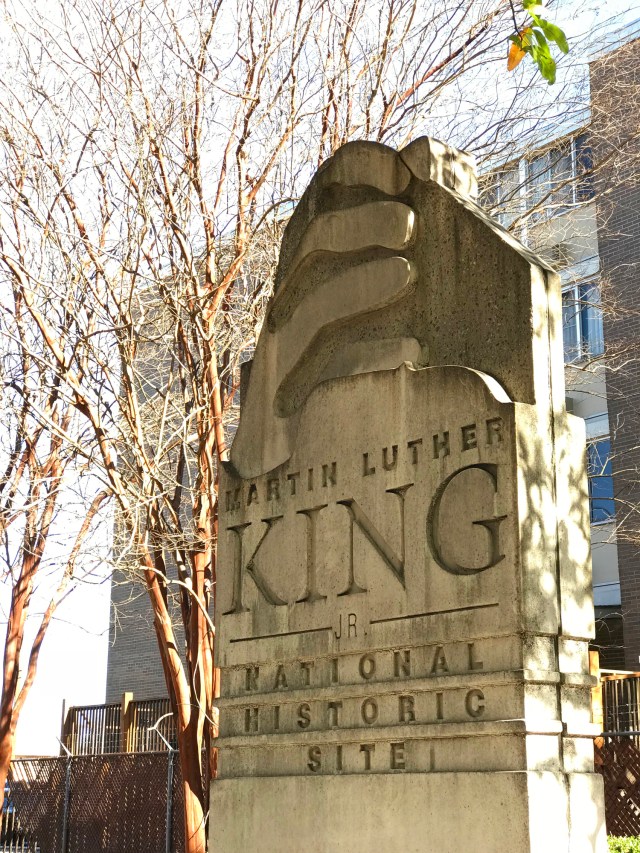
Take your kids back to where this leader of the Civil Rights Movement was once a kid. At the Martin Luther King Jr. National Historic Park, you can visit his birth home, play where MLK played as a child, and learn all about his early years in the movement. Get inspired to fight inequality in your neck of the woods.
RELATED: 9 Meaningful Black History Month Activities in Atlanta
Little Rock Central High School National Historic Site | Little Rock, AR
The Little Rock Central High School was the most prominent example of the desegregation of public schools in 1954 when nine African-American students attended school here for the first time in history. You have to arrange a tour to enter the school, now designated a National Historic Site, but it’s relatively easy to do and a great way to help kids understand the significance of this school as well as the history of desegregation in the U.S.
Belle Meade Plantation | Nashville, TN

You’d think the last thing you’d want to do to understand race in America is to visit the grounds of a plantation that once used enslaved people to make its wealth. But after a recent visit to Belle Meade Plantation in the Nashville area, we can report first-hand that this historic property is at the forefront of talking with the public in a truthful way about the horrors of slavery while honoring the African-American history of the property.
The Journey to Jubilee tour follows the story of the African-Americans who were brought to the plantation in 1807, but who stayed on the plantation through the early 1900s. It shows their vital presence on the property and their story of enslavement to freedom, and provides visitors with an understanding of the times from the African-American viewpoint. This tour is not recommended for kids under 12 due to the graphic reality of slavery, however, the general tour of Belle Meade also incorporates the story of the African-Americans who came as slaves but stayed on as hired workers after the abolishment of slavery. The property itself is very kid-friendly and an excellent respite from the bustle of the city.
Learn About the Underground Railroad | Auburn, NY
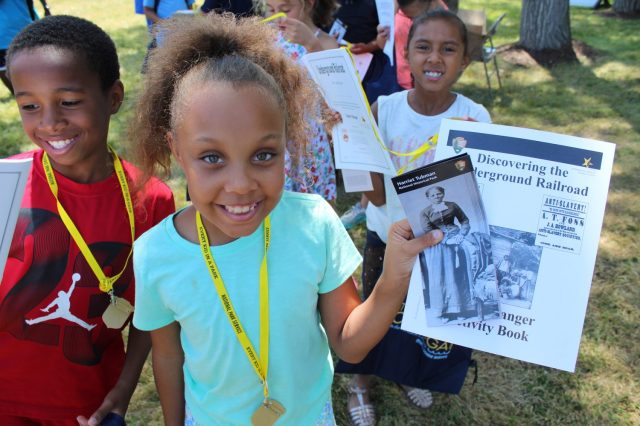
Auburn is a charming town in the Finger Lakes region of New York State and has an incredibly rich history. Teach your children what it really means to stand up to tyranny by immersing them in the world of Harriet Tubman. The national park that bears her name is the perfect place to learn all about this incredible woman who emancipated herself from slavery at the age of just 27 and went on to help dozens of slaves find freedom. Before you go, the kids can become Underground Railroad Junior Rangers to learn about the system of secret houses and waystations that helped slaves find freedom. Harriet Tubman National Historical Park includes her home, a visitor’s center, the Harriet Tubman Home for the Aged, and the church she raised funds to build. Her burial site is also nearby. The town of Auburn also boasts several other history museums and collections, a memorable public theater, and year-round events and festivals.
Deep Ellum - Dallas, TX
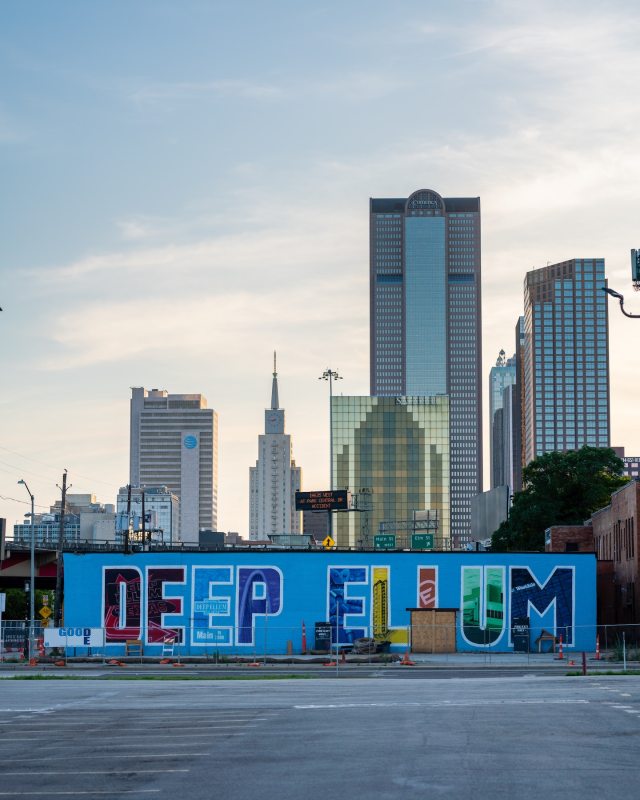
Established in 1873, Deep Ellum is one of Dallas’ oldest cultural hubs and has deep ties to the Black community. Starting as a Black farming community, by the 1920s, according to Wikipedia, “the neighborhood had become a hotbed for early jazz and blues musicians, hosting the likes of Blind Lemon Jefferson, Robert Johnson, Huddie "Lead Belly" Ledbetter, and Bessie Smith in Deep Ellum clubs such as The Harlem and The Palace.” Now a popular spot for clubs, you can still sense the history here, especially through the street art, which can be found in murals that depict the rich culture and history of the area.
RELATED: The Best Places to Learn about Black History in Dallas
Rosa Parks Memorial | Montgomery, AL
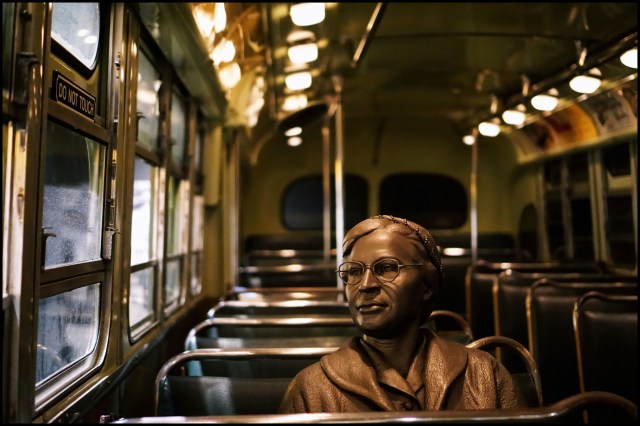
Smack dab on the corner where Civil Rights activist Rosa Parks boarded a public bus and where she was infamously arrested for refusing to give up her seat to a white passenger, this museum focuses on Parks' story and its place in the Civil Rights Movement. The Museum includes a permanent exhibit, “The Cleveland Avenue Time Machine,” a replica city bus that uses fog, lighting, sound, hydraulics, and a robot bus driver to guide visitors on a series of “time jumps” from Jim Crow to “Separate But Equal.”
Civil Rights Lessons | Greensboro, NC
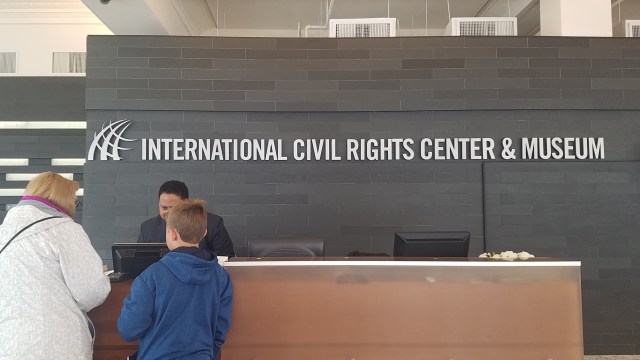
In Greensboro, NC, your kids can visit the site of the first Civil Rights sit-in and learn about the A&T Four—four young African-American students who sat at a “Whites Only” counter inside the Woolworth restaurant on Feb. 1, 1960, and refused to move. At the International Civil Rights Center & Museum, a guided tour helps your family learn and relearn important facts about America’s history before, during, and after the Civil Rights Movement. The Greensboro Cultural Arts Center houses the African America Atelier where you will find moving exhibits that the whole family will enjoy. And you'll want to visit the Guilford College Underground Railroad trail, which simulates how fugitives seeking freedom navigated in the woods on the Guilford College community with assistance from free and enslaved African-Americans and European-American Allies.
Museum of African Diaspora | San Francisco, CA
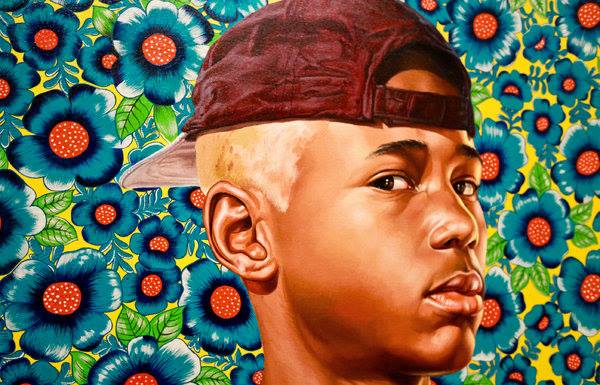
Celebrating the universal connection of all people through their association with Africa, this must-visit museum showcases exhibitions aimed at representing work that may be under-represented in other U.S. museums. For example, as soon as you walk in, you're greeted by a three-story mural comprised of 2,100 photographs submitted by people of the Diaspora.
RELATED: 9 Places to Experience Black History in the Bay Area
National Museum of African-American History and Culture | Washington, D.C.
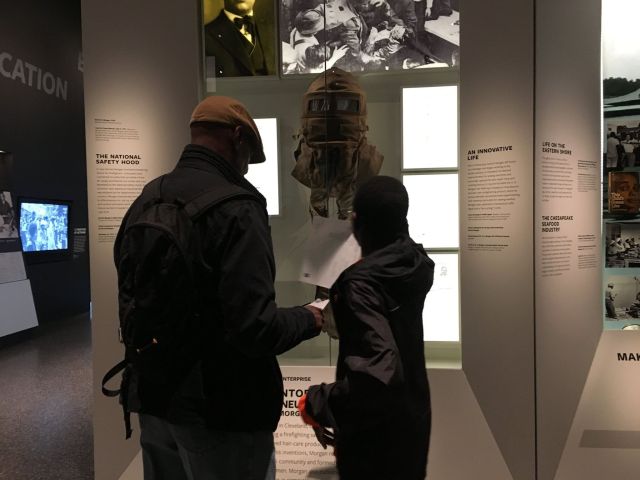
The stunning building, inspired by Yoruba art and filigree ironwork, is filled with presentations and artifacts that give visitors a glimpse at all aspects—the good and the gut-wrenching—of the African American experience. It’s a must-visit for the entire family. See our in-depth guide here.
RELATED: 9 Places to Learn About Black History In & Near the DMV
The National Museum of African American Music | Nashville, TN
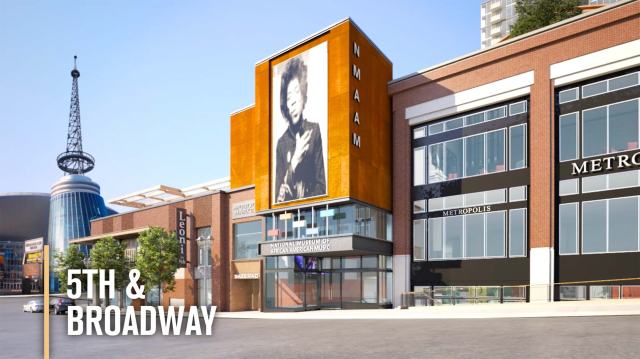
You'll want to make note of this museum that's dedicated to educating, preserving, and celebrating more than 50 music genres and styles that were created or inspired by African Americans. The 56,000-square-foot museum can be found in the heart of Nashville and includes artifacts, objects, memorabilia, clothing, and state-of-the-art technology to showcase different narratives and genres. Learn more at nmaam.org
National A. Philip Randolph Pullman Porter Museum | Chicago, IL
Located in the Historic Pullman District in Chicago, IL, this museum was opened in 1995 to pay homage to Asa Philip Randolph and Pullman Porters, the men who made up the membership of the Brotherhood of Sleeping Car Porters (BSCP) union. Randolph was the chief organizer and co-founder of the BSCP, the first African-American labor union in the country to win a collective bargaining agreement. Under Randolph’s leadership, the Pullman Porters fought a valiant battle for employment equality with the corporate giant, the Pullman Rail Car Company.
RELATED: 25+ Ways to Celebrate Black History Month in Chicago
Buffalo Soldiers National Museum | Houston, TX
African Americans have served proudly in every great American war. In 1866, through an act of Congress, legislation was adopted to create six all-African-American Army units. These fighting men represented the first Black professional soldiers in a peacetime army. The recruits came from varied backgrounds including formerly enslaved people and Civil War veterans. Once the westward movement had begun, prominent among those blazing treacherous trails of the Wild West were the Buffalo Soldiers of the U.S. Army. Learn about their history at Buffalo Soldiers National Museum.
Negro League Baseball Museum | Kansas City, MO
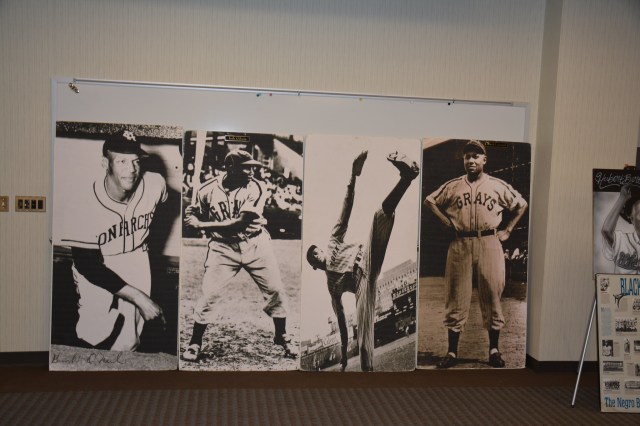
Established in a one-room office in 1990, the Negro Leagues Baseball Museum is dedicated to preserving and celebrating the rich history of African-American baseball and its profound impact on the social advancement of America. Now you can visit the museum's 10,000 sq. ft. home to learn how "Jim Crow" laws forced Black baseball players to form their own teams, “barnstorming” around the country to play anyone who would challenge them.
In 1920, an organized league structure was formed under the guidance of Andrew “Rube” Foster—a former player, manager, and owner of the Chicago American Giants. In a meeting held at the Paseo YMCA in Kansas City, Mo., Foster and a few other Midwestern team owners joined to form the Negro National League. Soon, rival leagues formed in Eastern and Southern states, bringing the thrills and innovative play of Black baseball to major urban centers and rural countryside in the U.S., Canada, and Latin America. The Leagues maintained a high level of professional skill and became centerpieces for economic development in many Black communities.
https://www.instagram.com/p/Bq3ghgonaNC/?hidecaption=true
The Black American West Museum | Denver, CO
What started as an homage to Black cowboys, the Black American West Museum is now dedicated to collecting, preserving, and disseminating the contributions of Blacks in the Old West including miners, soldiers, homesteaders, ranchers, blacksmiths, schoolteachers, lawmen, and other important professions.
Mary McLeod Bethune Home & Grave Site | Daytona Beach, FL
Educator and civil rights activist Dr. Mary McLeod Bethune was a fixture in Daytona Beach for 50 years. The founder of Bethune-Cookman University, a historical Black college, Bethune was a national advisor to Franklin D. Roosevelt and the only African American woman to be part of the United States delegation that helped form the United Nations charter. Open to the public, her home is on the university's campus and contains artifacts from Dr. Bethune's life. Her gravesite, also on campus, is located nearby.
Additional reporting by Amber Guetebier, Kate Loweth & Ayren Jackson-Cannady
Need some fresh ideas?
Subscribe to our weekly newsletter for expert parenting tips and simple solutions that make life instantly better.
By subscribing you agree to Tinybeans Terms and Privacy Policy
